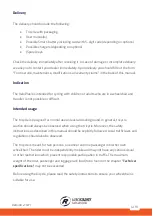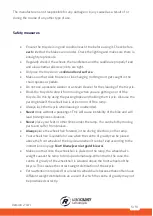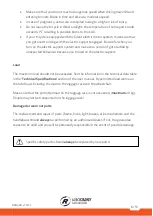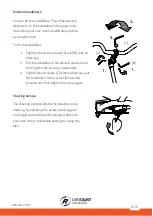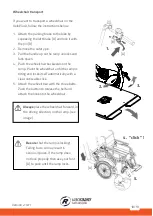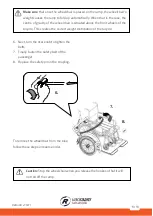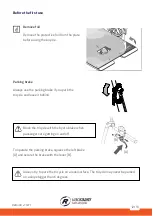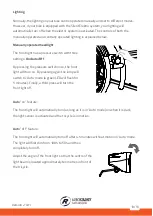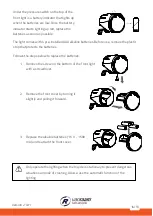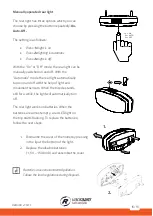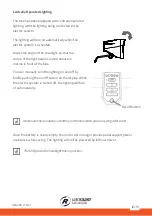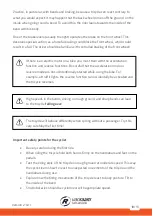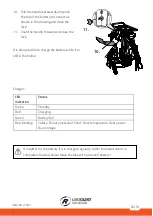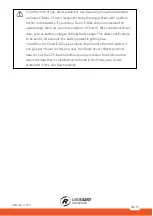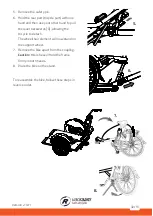
18/51
Version 21.01
Practice, in particular, with bends and braking, because a tricycle can react contrary to
what you would expect. It may happen that the back wheel comes off the ground on the
inside when going round a bend. To avoid this, the rider leans towards the inside of the
bend with his body.
One of the brake levers (usually the right) operates the brake on the front wheel. This
deserves special caution, as a forceful braking could block the front wheel, which could
result in a fall. The driver should be familiar with controlled braking of the front wheel!
If there is an electric motor on a bike: you must train with the acceleration
function and reverse functions. Be careful that the acceleration mode or
reverse mode are not unintentionally started while using the bike. For
example, at traffic lights the reverse function can accidentally be activated and
the tricycle reverses.
High speeds in the bends, driving on rough ground, and sharp bends can lead
to the tricycle
falling over
!
The tricycle will behave differently when cycling without a passenger. Try this
very carefully the first time!
Important safety points for the cyclist
•
Be very careful during the first ride.
•
When riding the tricycle hold both hands firmly on the handlebars and feet on the
pedals.
•
Test the riding style of the tricycle on rough ground at moderate speed. This way
the cyclist learns how to react to unexpected movements of the tricycle and the
handlebars during use.
•
Explore how the tilting movements of the tricycle react to body posture. Tilt to
the inside of the bend.
•
Small obstacles should be cycled over with appropriate speed.
Summary of Contents for VeloPlus3
Page 46: ...46 51 Version 21 01...
Page 47: ...47 51 Version 21 01...
Page 48: ...48 51 Version 21 01...
Page 49: ...49 51 Version 21 01...
Page 50: ...50 51 Version 21 01...

